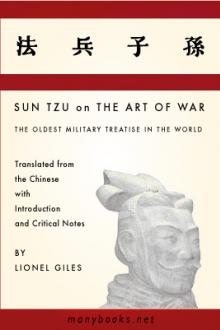Genre Philosophy. Page - 23

nce to Paine's footnote (itself altered in some editions!), in which he says: "If this has happened within such a short space of time, notwithstanding the aid of printing, which prevents the alteration of copies individually; what may not have happened in a much greater length of time, when there was no printing, and when any man who could write, could make a written copy, and call it an original, by Matthew, Mark, Luke, or John.
Nothing appears to me more striking, as an illustration of the far-reaching effects of traditional prejudice, than the errors into which some of our ablest contemporary scholars have fallen by reason of their not having studied Paine. Professor Huxley, for instance, speaking of the freethinkers of the eighteenth century, admires the acuteness, common sense, wit, and the broad humanity of the best of them, but says "there is rarely much to be said for their work as an example of the adequate treatment of a grave and difficult investigation," and that they shared with their adve

e of love, and appears to have borrowed largely from Vatsyayana on the subject. Now Virahamihira is said to have lived during the sixth century A.D., and as Vatsya must have written his works previously, therefore not earlier than the first century A.D., and not later than the sixth century A.D., must be considered as the approximate date of his existence.
On the text of the 'Aphorisms on Love', by Vatsyayana, only two commentaries have been found. One called 'Jayamangla' or 'Sutrabashya', and the other 'Sutra vritti'. The date of the 'Jayamangla' is fixed between the tenth and thirteenth century A.D., because while treating of the sixty-four arts an example is taken from the 'Kavyaprakasha' which was written about the tenth century A.D. Again, the copy of the commentary procured was evidently a transcript of a manuscript which once had a place in the library of a Chaulukyan king named Vishaladeva, a fact elicited from the following sentence at the end of it.
'Here ends the part relating to the

we find almost everywhere a complicated arrangement of society into various orders, a manifold gradation of social rank. In ancient Rome we have patricians, knights, plebeians, slaves; in the Middle Ages, feudal lords, vassals, guild-masters, journeymen, apprentices, serfs; in almost all of these classes, again, subordinate gradations.
The modern bourgeois society that has sprouted from the ruins of feudal society has not done away with class antagonisms. It has but established new classes, new conditions of oppression, new forms of struggle in place of the old ones. Our epoch, the epoch of the bourgeoisie, possesses, however, this distinctive feature: it has simplified the class antagonisms: Society as a whole is more and more splitting up into two great hostile camps, into two great classes, directly facing each other: Bourgeoisie and Proletariat.
From the serfs of the Middle Ages sprang the chartered burghers of the earliest towns. From these burgesses the first elements of the bourgeoisie we

CHUAN, adding that there were two other CHUAN besides. This has brought forth a theory, that the bulk of these 82 chapters consisted of other writings of Sun Tzu -- we should call them apocryphal -- similar to the WEN TA, of which a specimen dealing with the Nine Situations [15] is preserved in the T`UNG TIEN, and another in Ho Shin's commentary. It is suggested that before his interview with Ho Lu, Sun Tzu had only written the 13 chapters, but afterwards composed a sort of exegesis in the form of question and answer between himself and the King. Pi I-hsun, the author of the SUN TZU HSU LU, backs this up with a quotation from the WU YUEH CH`UN CH`IU: "The King of Wu summoned Sun Tzu, and asked him questions about the art of war. Each time he set forth a chapter of his work, the King could not find words enough to praise him." As he points out, if the whole work was expounded on the same scale as in the above- mentioned fragments, the total number of chapters could not fail to be considerable. Then the numero

Avant-Garde expressions on divinity. It internalizes the 3Ms: Mysticism-Marvel-Magic, with a novel & unique perspective of 3Cs: Consciousness-Cognition-Causality. It’s about the Registry & Artistry of a Super-positioned Consciousness, which aligns the cardinal elements within Subjective Self, Milieus (within & outside) and Idea of Divinity in singular linearity. If God is in details, it’s here.

No matter who you are, no matter what your profession, if you are a student, no matter what you studying, you will rise to there top. Not only that. You will also become a indispensable person. Because the universe fills you with divine love. These are not just words. If you follow the guidance of the wisdom correctly, you will see that all this becomes a reality. Let me say something here that encourages you. That is, in this all activities the universes does certain things for you. It will open new doors for you.

The human has always prided himself as an exceptional ‘moral species’ but has always been haunted by two questions: ‘Why am I not good when I want to be; ‘why do I do bad when I don’t want to’. This is at the heart of what scriptures and sages have long alluded to as the eternal internal struggle-between good and evil - that wages in the human consciousness.


